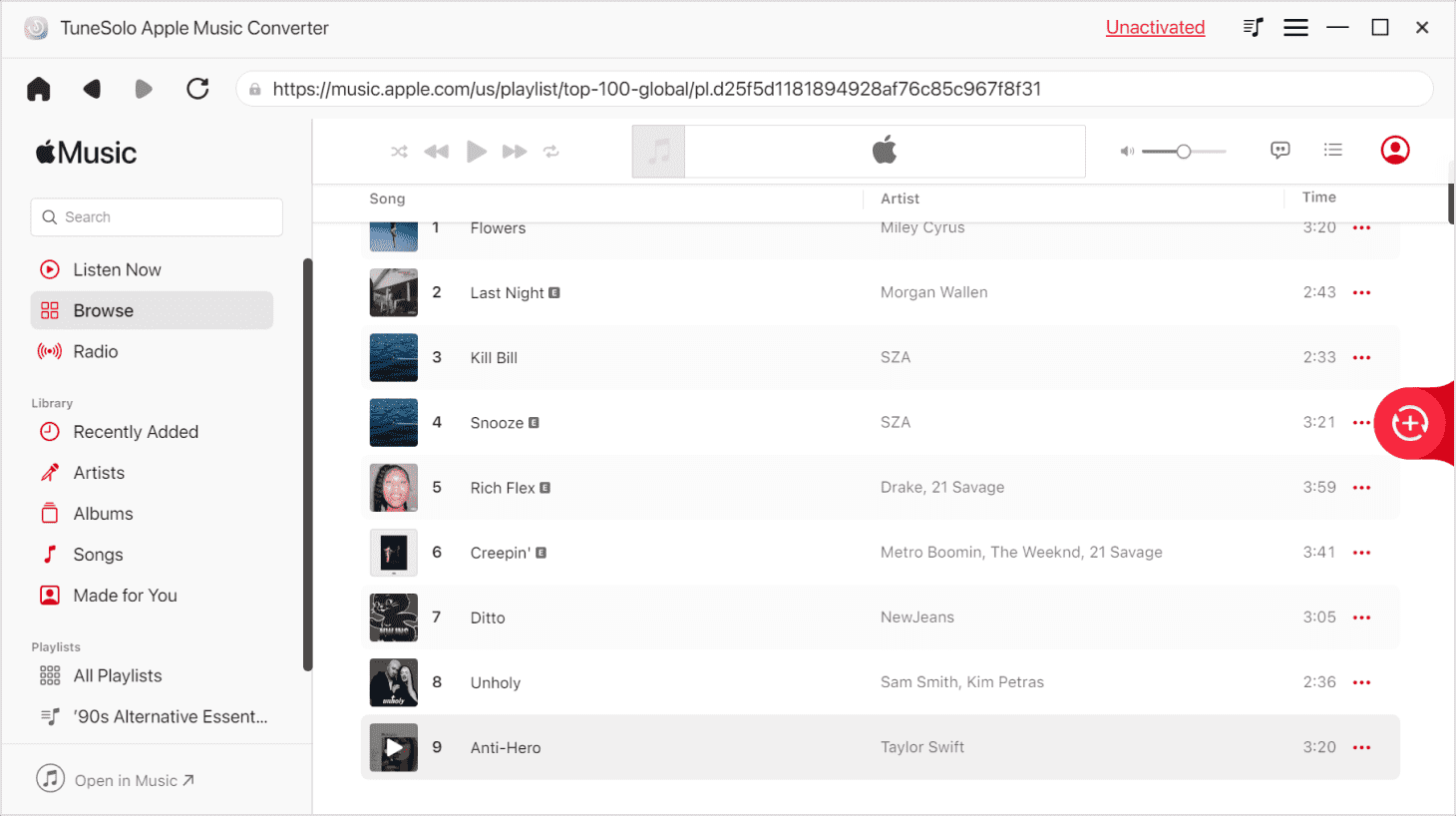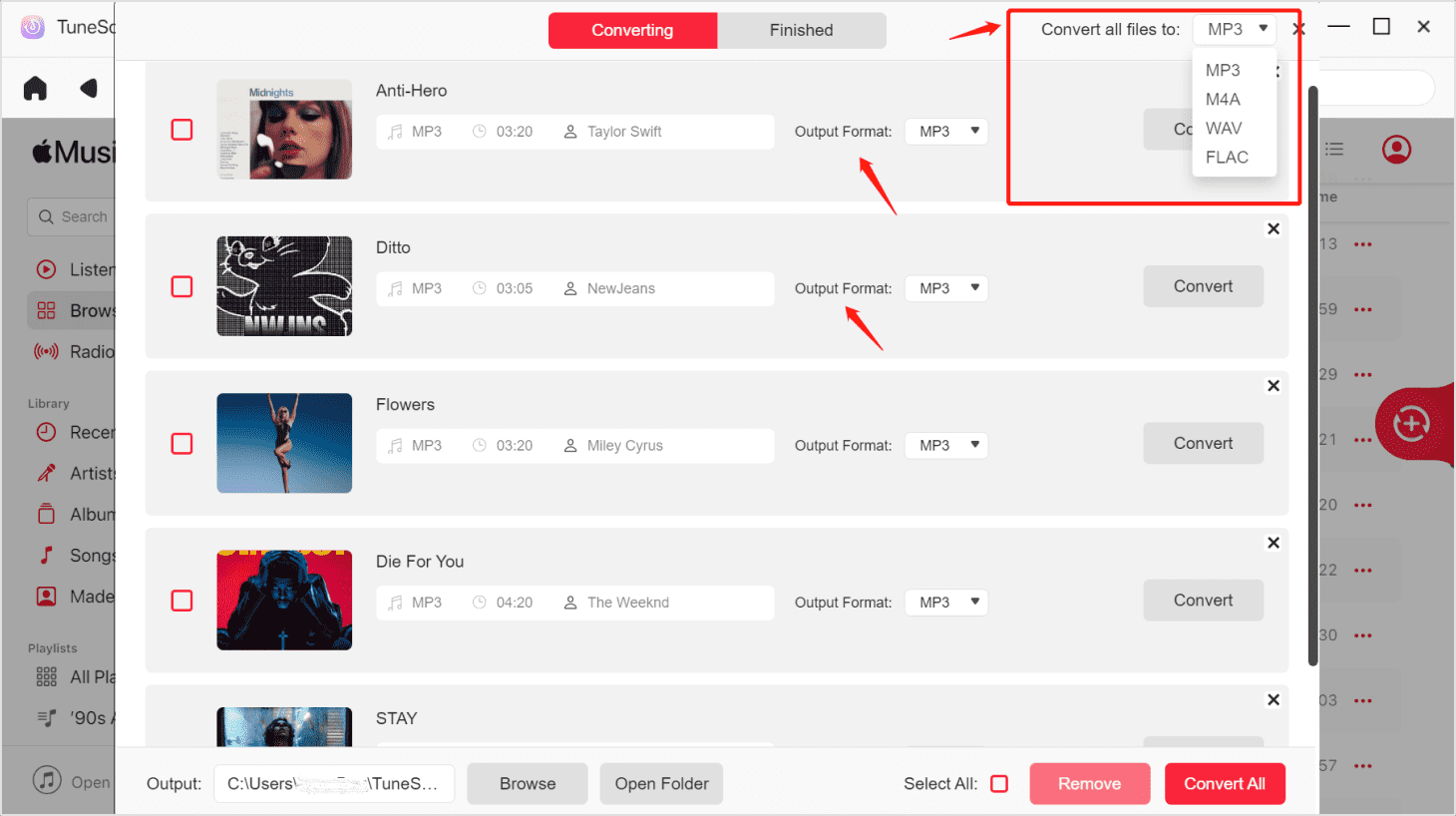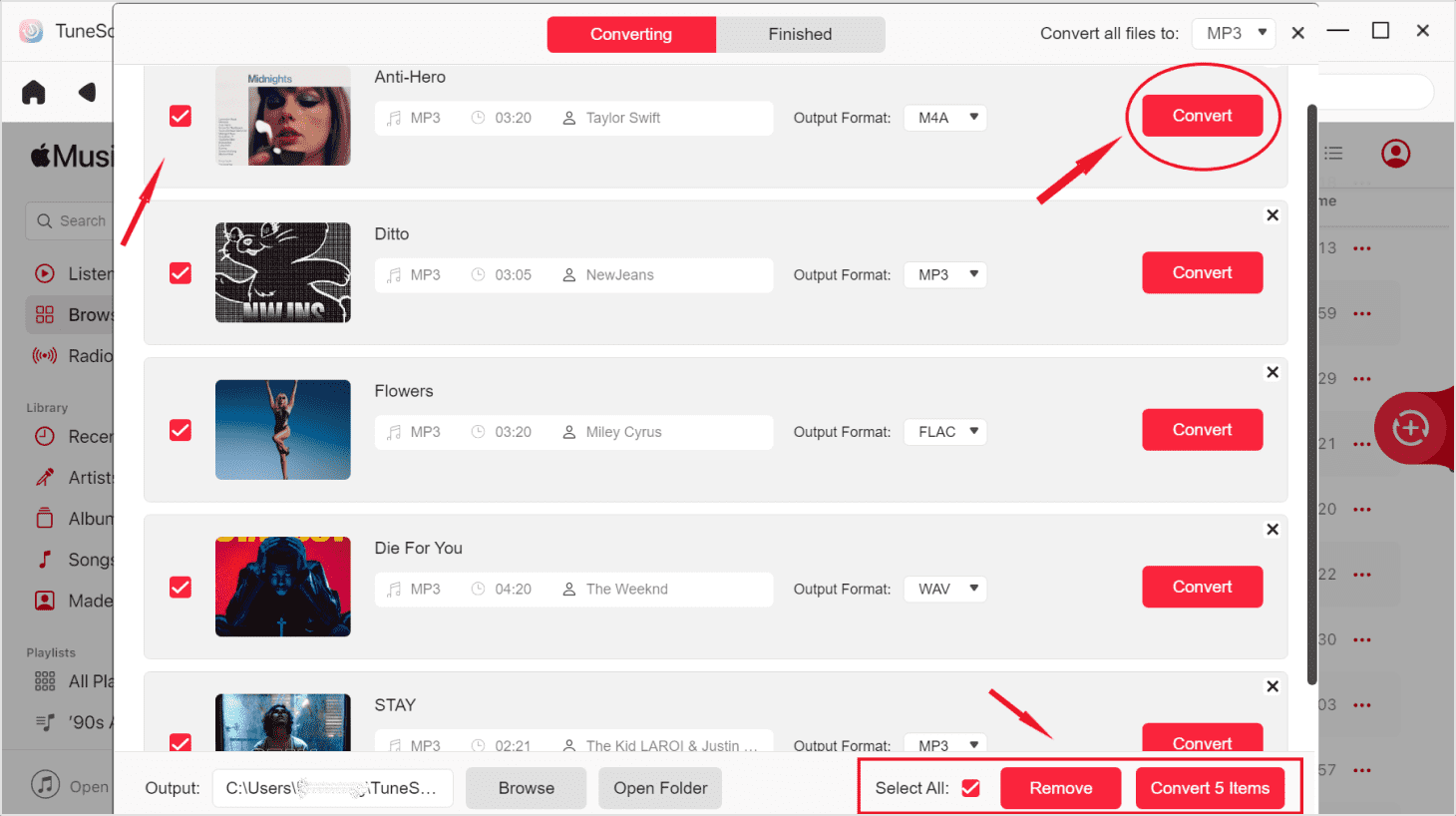Apple Music Download Limit and How Does it Work
As a subscription-based music streaming service, Apple Music provides access to a vast library of over 100 million tracks, available for both online and offline playback. New users can enjoy the service for free during a 1-month trial period. Following the trial, a monthly subscription fee of $9.99 is required to continue accessing Apple Music's extensive music catalog. Similar to other streaming platforms such as Spotify, Apple Music imposes a download limit of 10,000 songs. In this discussion, we will focus on the download restrictions of Apple Music and explore methods to achieve unlimited downloads.
Article Content Part 1. What is Apple Music Download Limit?Part 2. How to Download Apple Music without Any Limit?Part 3. How Do I Set Limits on Apple Music?Part 4. The Summary
Part 1. What is Apple Music Download Limit?
The Apple Music app is really one of the best music streaming services wherein one can stream numerous tracks under several different genres and styles. Apart from this, the app also has a lot of advantages that can be enjoyed by its loyal subscribers. These are probably the reasons why people are continuously paying the Apple Music subscription fee.
Can I Download Music for Free on Apple Music?
Apple Music operates on a subscription-based model, requiring you to have an active subscription to access its extensive music library, which includes the option to download songs for offline listening. Subscribers gain the privilege of streaming over 100 million songs online. The platform allows you to download music, enabling offline enjoyment through the Apple Music app or iTunes. Moreover, the iCloud Music Library feature facilitates seamless synchronization of downloaded songs across multiple devices associated with the same Apple ID.
What Is Apple Music Download Limit?
With a vast library boasting over 100 million songs, Apple Music offers subscribers the capability to download up to 100,000 songs in their personal library. This generous download limit is consistent across all devices and platforms, encompassing iOS devices (such as iPhone, iPad, and iPod Touch), Mac, PC, and Android. This expansive download allowance underscores Apple Music's commitment to providing a comprehensive music streaming experience for you.
What Should I Do If I Hit My Apple Music Download Limit?
Once the download limit is reached, you have the option to manage their downloaded content on their devices by deleting specific songs from Apple Music, thereby freeing up space for additional downloads. In cases where the download limit has been reached across multiple devices, you have the flexibility to remove a device.
Alternatively, you can leverage professional and robust Apple Music downloaders to bypass download restrictions. This not only eliminates the limitations on downloads but also enables you to create permanent backups of their downloaded Apple Music, storing them on a hard drive or external devices like USB flash drives. Importantly, even if a subscription expires, is canceled, or comes to an end, the access to these backups remains unaffected, ensuring perpetual availability.
Part 2. How to Download Apple Music without Any Limit?
Considering all these limitations we mentioned above, even if no one has hit the Apple Music download limit so far, the number of devices and format limitations are still there. And all the songs you download from Apple Music can only be listened to within the app. If you really need to enjoy "real" offline listening or playback on other devices such as MP3 or portable players.
You can use TuneSolo Apple Music Converter to help you achieve it. It bypasses Apple Music download restrictions, and you can copy and move Apple Music downloads to any other device for playback, such as MP3 players, smart speakers, etc.
The five-star advantages of TunSolo Apple Music Converter are as follows:
- Via the TuneSolo Apple Music Converter, people can remove the DRM protection of Apple Music files and even audiobooks. Thus, downloading and playing on any device will be possible.
- You can also guarantee that the fast conversion and downloading of all files you would like to process will be done.
- Plus, you can enjoy the transformation of multiple tracks or audiobooks via one-time processing.
- What is more appealing is that there are numerous inputs and output formats that are supported by the app giving the users the ability to freely choose just by navigating the downward arrow.
- The user can also get the ability to modify some settings affecting the output files (if preferred or needed).
- This application is supported by a wide array of devices and can easily be installed just after completing the requirements needed prior to the installation activity.
- When talking about the procedure or steps that must be performed during the conversion of files, nobody will find those complicated since those are only simple to follow.
Would you like to try this TuneSolo Apple Music Converter? If it is a yes, then head to the next part to finally know the procedure that you need to follow.
Easy Steps to Download Apple Music for Offline Listening
Before dealing with the steps to convert the Apple Music songs you want via this TuneSolo Apple Music Converter, you need to make sure that your iTunes and Apple Music applications are closed and are not functioning.
By having this performed and checked, you will be assured that the smooth transformation of the files will be a success. Once you did this already, then you may now proceed to the steps presented below.
- On your TuneSolo Apple Music Converter’s main page, add the songs to be transformed.
- Choose MP3 from the output formats supported and change some settings (if preferred).
- Wait for a few minutes and begin streaming the converted songs.
You might notice that the three steps above are too easy to perform. But of course, we still have the detailed information here that you can use as a reference during the conversion process.
Step #1. On your TuneSolo Apple Music Converter’s Main Page, Add the Songs to be Transformed
Once you are done with the installation process, launch your TuneSolo Apple Music Converter and on the main page, upload all those Apple Music tracks that you would want to convert to MP3 format (suggested format as this is one of the most playable formats).
Take note that if you are having a hard time thinking about the requirements when it comes to the installation process, you can refer to the official website of TuneSolo Apple Music Converter to know the important details.

Step #2. Choose MP3 from the Output Formats Supported and Change Some Settings (if Preferred)
After having all the tracks uploaded successfully, then you can now choose the output format (which is MP3) from the list supported. By navigating to the “Output Format” portion, you will be seeing a downward arrow that you can use in order to choose MP3.
Make sure that you will also modify the output settings during this step (if you want to). Another good suggestion is to define a path wherein you will access the converted files after the whole conversion process.

Step #3. Wait for a Few Minutes and Begin Streaming The Converted Songs
By waiting for a few minutes, your songs will be converted (after hitting the “Convert” button at the bottom area of the page). While this is ongoing, you can also be assured that the DRM removal process is being done.
Thus, after having the converted files, you can freely download and save the songs on all the devices you have without worrying about the DRM encryption. All you need to do is to enjoy streaming good songs!

Part 3. How Do I Set Limits on Apple Music?
As said at the beginning of the article, if you Hit your Apple Music download limit, but you still want to add some new songs to download, you need to delete some existing songs to free up space.
For iOS Devices:
Step 1. Launch the Music app on your iOS device.
Step 2. Navigate to "Library" and then select "Downloaded." Swipe left on the desired song or album.
Step 3. Choose "Delete" and confirm the removal when prompted.
For Android:
Step 1. Launch the Apple Music app on your Android device.
Step 2. Navigate to the Library section and locate the downloaded song or album you wish to remove.
Step 3. Press and hold the desired song or album, then choose "Remove from Library" or select "Remove Download" from the available options on the screen.
Step 4. The selected item will be deleted, and this action will be reflected across all your synced devices.
For Mac or PC:
Step 1. Open iTunes (for PC) or the Music app (for Mac) on your computer.
Step 2. Navigate to the Songs section in the sidebar. On Mac, select View > Only Downloaded Music.
Step 3. Locate the downloaded songs or albums you want to remove, then right-click on the selections. Choose "Delete from Library" or "Remove Download" from the context menu.
Part 4. The Summary
To summarize, Apple Music does not actually have a limit when it comes to music downloading – there are no related articles that had given specific numbers before nor someone who reported to experience it.
But, just to make sure that nothing will hinder you from enjoying good songs via the Apple Music app, it best to have the TuneSolo Apple Music Converter with you!